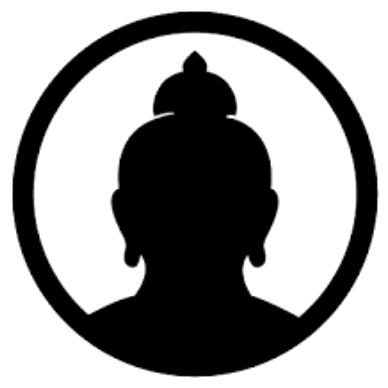Thich Nhat Hanh tells Andrea Miller that anyone can use the five mindfulness trainings to lead a life of understanding and compassion.
YOU MIGHT ALSO LIKE
CLEAR ALL
BY TOPIC
BY TEACHER
BY TYPE
FILTER

TOPIC
- Mindfulness Practices (32)
- Mindfulness (28)
- Self-Care (26)
- BIPOC Well-Being (20)
- Black Well-Being (19)
- Environmental Justice (19)
- Racial Justice (17)
- Spiritual Practices (16)
- Self-Mastery (15)
- Awareness (14)
- Tibetan Buddhism (13)
- Meditation (12)
- Trauma Healing (12)
- Climate Change (11)
- Empathy (11)
- Fellowship and Community (11)
- Healing Approaches (11)
- Self-Compassion (11)
- Building Character (10)
- Mind-Body Connection (10)
- Self-Discovery (10)
- Spirituality and Politics (10)
- Connection with Nature (9)
- Inner Life (9)
- Mindfulness Meditation (9)
- Nonviolence (9)
- Communication Skills (8)
- Compassion Meditation (8)
- Dharma (8)
- Emotional and Mental Health (8)
- Inner Peace (8)
- Intention (8)
- Leadership (8)
- Lovingkindness (8)
- Stress Management (8)
- Values (8)
- Buddha Nature (7)
- Economic Justice (7)
- Interdependence (7)
- Kindness (7)
- Motivation (7)
- Self-Reflection Practices (7)
- Social Responsibility (7)
- Breathwork (6)
- Burnout (6)
- Connection (6)
- Offering Support to Others (6)
- Racism (6)
- Self-Development (6)
- Spiritual Life (6)
- Sustainability (6)
- Vulnerability (6)
- Anxiety (5)
- Compassion Fatigue (5)
- Love (5)
- Lovingkindness Meditation (5)
- Neuroscience (5)
- Resilience (5)
- Self-Actualization (5)
- Spiritual Awakening (5)
- Suffering (5)
- Women’s Well-Being (5)
- Athlete Well-Being (4)
- Building Culture (4)
- Cognitive Behavioral Therapy (4)
- Collaboration (4)
- Conflict Resolution (4)
- Digital Life (4)
- Empowerment (4)
- Focus (4)
- Habits of Mind (4)
- LGBTQIA Well-Being (4)
- Parenting (4)
- Poverty/Economic Inequality (4)
- Presence (4)
- Psychology (4)
- Racial Healing (4)
- Self-Healing (4)
- Self-Love (4)
- Shame (4)
- Spiritual Development (4)
- Spiritual Direction (4)
- Spiritual Growth (4)
- Well-Being (4)
- Youth Activism (4)
- Anger (3)
- Anger Management (3)
- Asking for Help (3)
- Belonging (3)
- Body Scan Meditation (3)
- Cancer (3)
- Chanting (3)
- Cognitive Psychology (3)
- Conscience (3)
- Courage (3)
- Creative Well-Being (3)
- Ecospirituality (3)
- Emotional Intelligence (EQ) (3)
- Entrepreneurship (3)
- Functional Medicine (3)
- Generosity (3)
- Global Challenges (3)
- Gratitude (3)
- Human Potential (3)
- Imagination and Creativity (3)
- Indigenous Well-Being (3)
- Moral Philosophy (3)
- Naturopathy (3)
- Othering (3)
- Physical Health (3)
- Racial Discrimination (3)
- Relationship with Time (3)
- Self-Worth (3)
- Speaking Your Truth (3)
- Spirituality and Health (3)
- Stress (3)
- Whiteness (3)
- Work-Life Balance (3)
- Acceptance (2)
- Authenticity (2)
- Caregiver Well-Being (2)
- Christianity (2)
- Collective Trauma (2)
- Comparing Belief Traditions (2)
- Consciousness (2)
- Death and Dying (2)
- Depression (2)
- Ego (2)
- Energy Healing (2)
- Environmental Exploitation (2)
- Facing Own Death (2)
- Failure (2)
- Feminism (2)
- Finding Meaning (2)
- Forgiveness (2)
- Friendship (2)
- Gender and Spirituality (2)
- Gender Justice (2)
- Growth Mindset (2)
- Habit Formation (2)
- Happiness (2)
- Healthy Eating (2)
- Identity (2)
- Inflammation (2)
- Integrative Medicine (2)
- Islam (2)
- Karma (2)
- Kirtan Music (2)
- Latinx Well-Being (2)
- LGBTQIA Sexuality (2)
- Men’s Well-Being (2)
- Philosophical Approaches (2)
- Psychology and Spirituality (2)
- PTSD (2)
- Racial Identity (2)
- Rebirth (2)
- Relationship Challenges (2)
- Rest (2)
- Search for Purpose (2)
- Self-Acceptance (2)
- Self-Control (2)
- Self-Realization (2)
- Setting Limits and Boundaries (2)
- Social Media Addiction (2)
- Transformation (2)
- Traumatic Grief (2)
- Trust (2)
- Unconscious Bias (2)
- Yoga (2)
- Zen Buddhism (2)
- AAPI Well-Being (1)
- Access to Education (1)
- Addiction Recovery (1)
- Animal Connection (1)
- Archetypes (1)
- Autism (1)
- Autoimmune Disease (1)
- Boundary Confusion (1)
- Brain Health (1)
- Chronic Health Conditions (1)
- Competition (1)
- Confidence (1)
- Cross-Cultural Dynamics (1)
- Curiosity (1)
- Death or Loss of a Parent (1)
- Decision Making (1)
- Diamond Approach (1)
- Disabled Well-Being (1)
- Discrimination (1)
- Embodiment (1)
- Enlightenment (1)
- Epigenetics (1)
- Faith (1)
- Fear (1)
- Female Empowerment (1)
- Forest Bathing (1)
- Freedom (1)
- Gender Challenges (1)
- Gender Discrimination (1)
- Genetics (1)
- Goal Setting (1)
- Grief (1)
- Guided Imagery (1)
- Guided Meditation (1)
- Guilt (1)
- Healing Touch (1)
- Higher Calling (1)
- Hinduism (1)
- Homeopathy (1)
- Homophobia (1)
- Honoring Emotion (1)
- Hope (1)
- Hospice (1)
- Humanitarian Aid/Relief Work (1)
- Illness and Injury (1)
- Incarceration (1)
- Indigenous Rights (1)
- Insight (Vipassana) Meditation (1)
- Intergenerational Trauma (1)
- Jewish Renewal (1)
- Journaling (1)
- Joy (1)
- Learning Styles (1)
- Letting Go (1)
- Life Challenges (1)
- Life Force Energy (1)
- Living with Illness (1)
- Longevity (1)
- Mantra Meditation (1)
- Mentoring (1)
- Negative Self-Talk (1)
- Neoshamanism (1)
- Neurodiversity (1)
- Non-Duality (1)
- Oneness (1)
- Peak Performance (1)
- Personal Development (1)
- Poetry (1)
- Positive Psychology (1)
- Positive Thinking (1)
- Postpartum Depression (1)
- Prayer (1)
- Pregnancy and Childbirth (1)
- Productivity (1)
- Quantum Physics (1)
- Reproductive Health (1)
- Ritual (1)
- Science and Spirituality (1)
- Self-Expression (1)
- Self-Limiting Beliefs (1)
- Self-Reliance (1)
- Sexual Assault or Abuse (1)
- Sexuality (1)
- Shadow (1)
- Sleep (1)
- Sleep Disorders (1)
- Somatic Experiencing (1)
- Soul Mission (1)
- Spiritual Healing (1)
- Spiritual Quest (1)
- Storytelling (1)
- Suicide Loss Survivor (1)
- The Divine (1)
- Toxic Relationships (1)
- Transgender Well-Being (1)
- Unity (1)
- Veganism (1)
- Veteran Well-Being (1)
- Willpower (1)
- Women’s Rights (1)
- Work Challenges (1)
- Work Relationships (1)
- Young Adult Well-Being (1)
- Zen Meditation (1)
FILTER

TEACHER
- Miles Neale (4)
- Thubten Chodron (4)
- William Barber (4)
- Bhikku Anālayo (3)
- Joanna Macy (3)
- Marshall Rosenberg (3)
- Martin Luther King Jr. (3)
- Paul Gilbert (3)
- Pema Khandro (3)
- Scott Shute (3)
- Andy Puddicombe (2)
- angel Kyodo williams (2)
- Buddha (2)
- Chan Khong (2)
- Elisa Shankle (2)
- Ethan Nichtern (2)
- Gaylon Ferguson (2)
- Greta Thunberg (2)
- Jack Kornfield (2)
- Jacqueline Carter (2)
- Jacqui Lewis (2)
- Jay Shetty (2)
- Kenny Ausubel (2)
- Krishna Das (2)
- Mark Epstein (2)
- Mark Manson (2)
- Satish Kumar (2)
- Sharon Salzberg (2)
- Shauna Shapiro (2)
- Sherin Khankan (2)
- Thich Nhat Hanh (2)
- A. H. Almaas (1)
- Alberto Villoldo (1)
- Amishi Jha (1)
- Andrew Harvey (1)
- Ashley Neese (1)
- bell hooks (1)
- Bernie S. Siegel (1)
- Chögyam Trungpa (1)
- Dacher Keltner (1)
- Daisy Khan (1)
- Daniel Goleman (1)
- Deena Metzger (1)
- Dietrich Bonhoeffer (1)
- don Jose Ruiz (1)
- Donna Jackson Nakazawa (1)
- Duane Elgin (1)
- Edward Tick (1)
- Elizabeth Mattis Namgyel (1)
- Elizabeth Stanley (1)
- Emiliana Simon-Thomas (1)
- Gabor Maté (1)
- Gabrielle Bernstein (1)
- Gloria Steinem (1)
- Helen Weng (1)
- James Doty (1)
- Jan Willis (1)
- Jean Shinoda Bolen (1)
- Jetsunma Tenzin Palmo (1)
- Joan Halifax (1)
- john a. powell (1)
- Jon Kabat-Zinn (1)
- Kamilah Majied (1)
- Kenneth Robinson (1)
- Kristin Neff (1)
- La Sarmiento (1)
- Lama Rod Owens (1)
- Lama Surya Das (1)
- LaRayia Gaston (1)
- Larry Dossey (1)
- Larry Ward (1)
- Louise Erdrich (1)
- Mahatma Gandhi (1)
- Malcolm X (1)
- Martha Beck (1)
- Maya Angelou (1)
- Mirabai Bush (1)
- Myokei Caine-Barrett (1)
- Nelson Mandela (1)
- Nicole Cardoza (1)
- Philip Goldberg (1)
- Rachel Carson (1)
- Rami Shapiro (1)
- Rick Hanson (1)
- Robert Thurman (1)
- Roberto Assagioli (1)
- Rolf Gates (1)
- Roxanne Dault (1)
- Ruth Denison (1)
- Sally Kempton (1)
- Serene Jones (1)
- Sharon Brous (1)
- Sharon Kleinbaum (1)
- Stephanie Rose Bird (1)
- Sue Morter (1)
- Sylvia Boorstein (1)
- Toni Bernhard (1)
- Tony Robbins (1)
- Will Cole (1)
- Wim Hof (1)
- Winona LaDuke (1)




